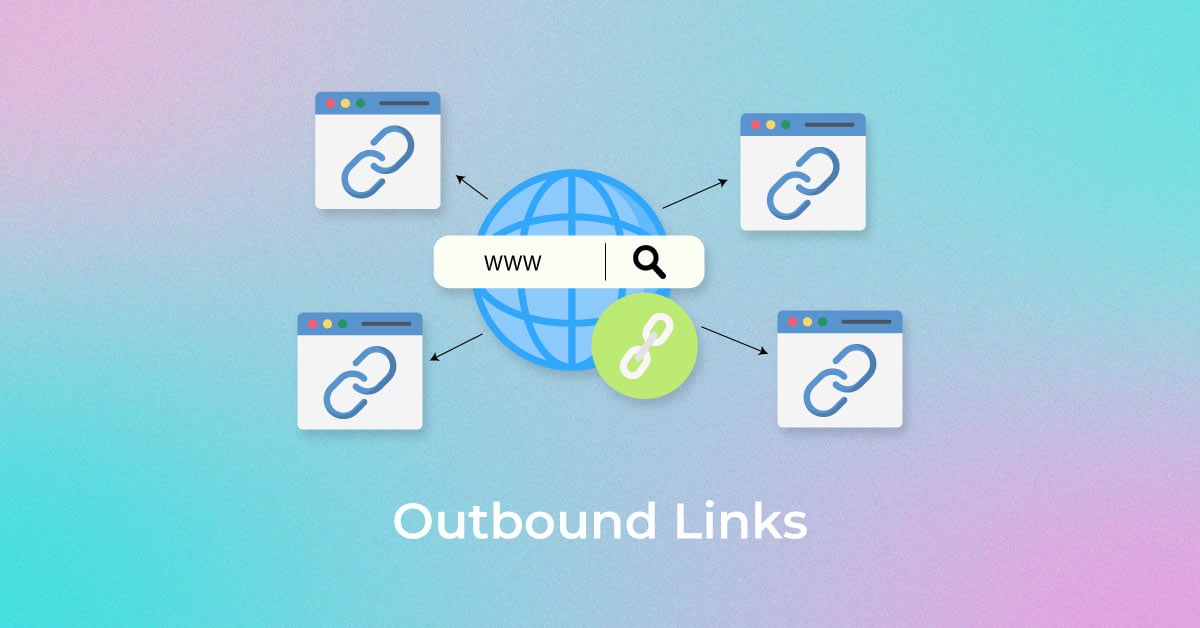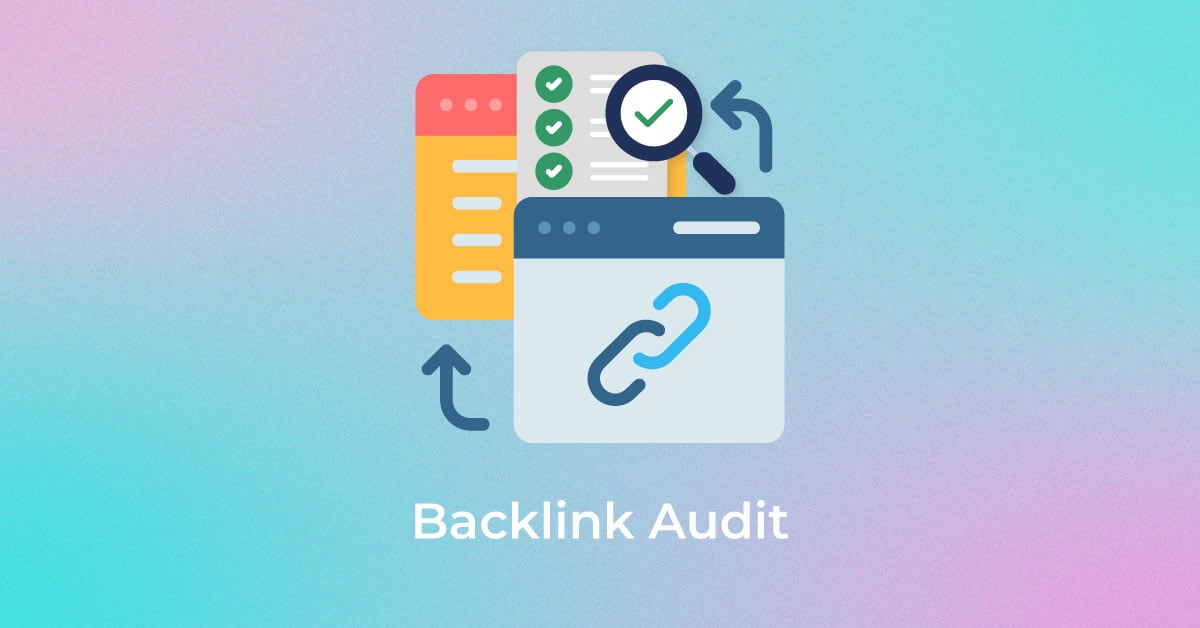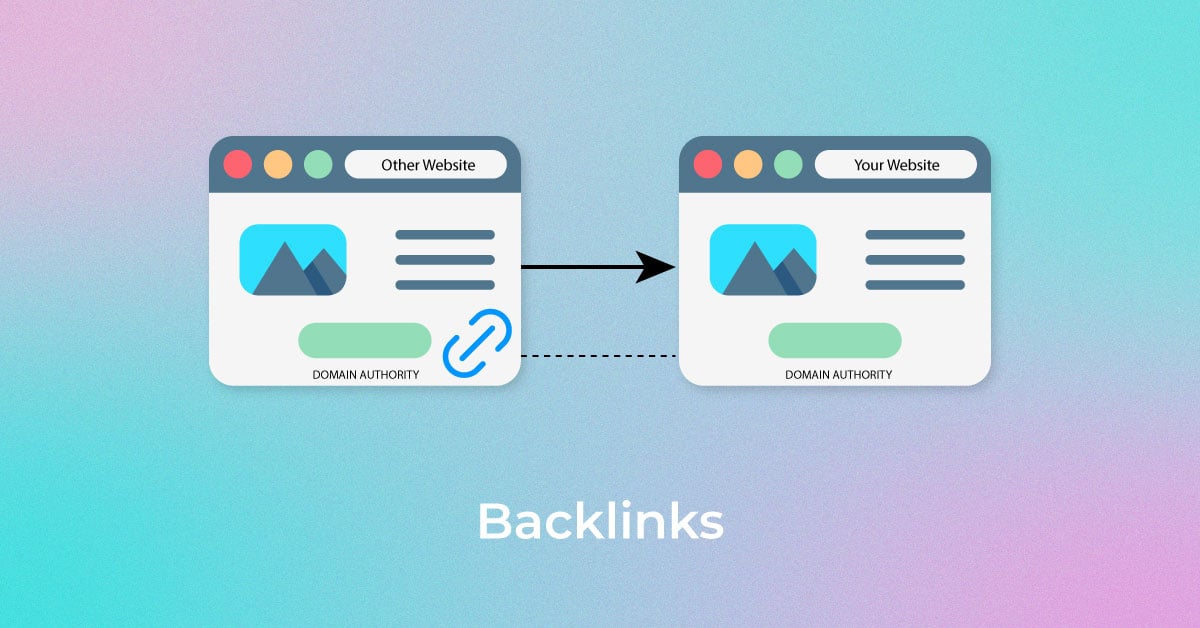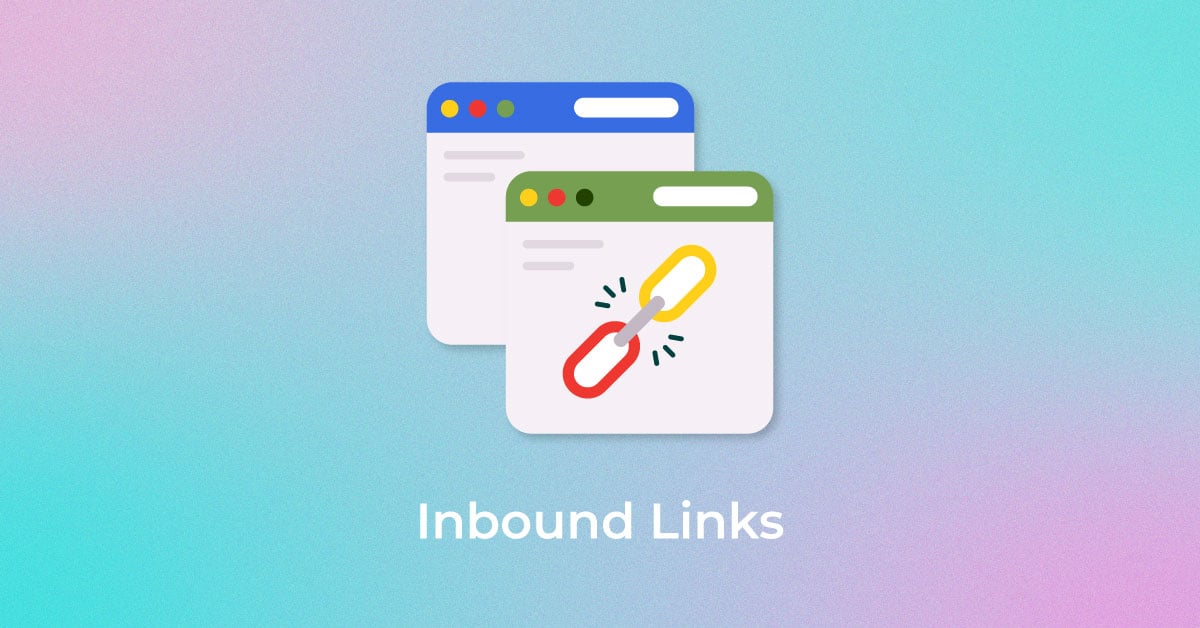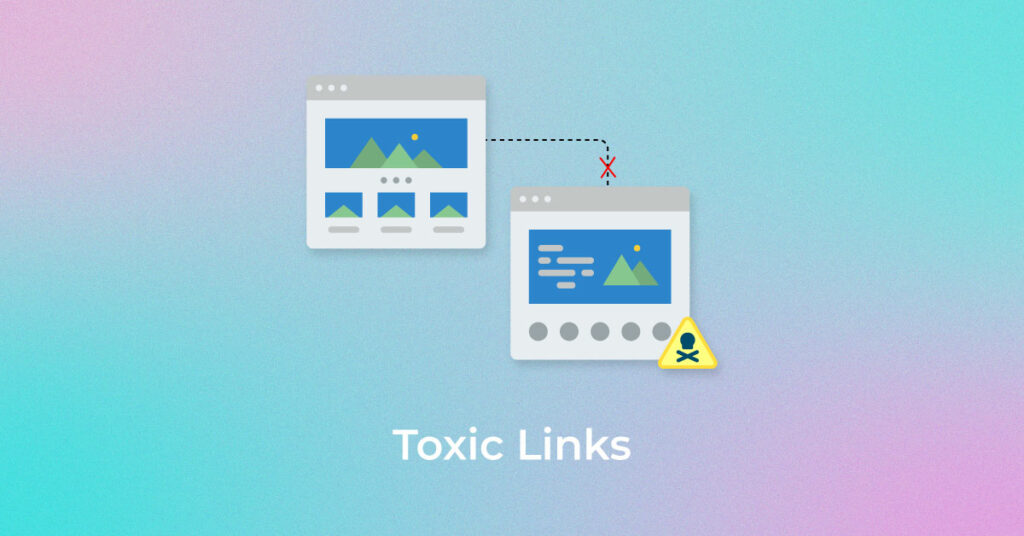What are Toxic Backlinks?
Toxic backlinks are harmful inbound links that originate from low-quality, spammy, or manipulative websites. These links are considered unnatural by Google and can negatively impact your website’s search rankings either through algorithmic filters or manual penalties.
For example, they typically come from sources like:
- Link farms – networks of websites created solely to exchange links
- Private Blog Networks (PBNs) – artificial blog sites used to build backlinks
- Unmoderated directories or forums – with irrelevant or low-value content
- Automated link-building tools – that create large volumes of low-quality links
- Irrelevant or foreign-language sites – not contextually related to your niche
According to Google’s Link Spam guidelines, such links are a violation of its search policies. Rather than chasing link quantity, focus on earning relevant, trustworthy backlinks that support long-term search engine optimisation (SEO) growth.
What makes a link toxic?
Not all backlinks help your SEO, some can actively harm it. Toxic links are typically associated with manipulation, irrelevance, or low credibility. Here’s what to watch for:
1. Low Domain Authority and Spammy Sites:
Backlinks from sites with poor reputations, thin content, or little organic visibility are a red flag. Domains with low authority and high spam score, especially those created solely for link exchanges or SEO manipulation, can signal spam to search engines. These links lack editorial value and may be flagged by Google’s spam detection systems.
2. Mirror Pages and Duplicate Content:
If multiple sites link to you using identical page structures, content, or anchor text, Google may classify them as duplicate or scraped content sources. These “mirror pages” often exist in game ranking systems and provide no real user value. Links from such pages can dilute link equity and raise toxicity concerns.
3. Manipulative Link Placements
Page segmentation also impacts your link building process. The links might be toxic if you are getting them from a page without a proper header, footer, or column design. When the proportion of displayed text to HTML on a Web page is low, it is considered a bad layout.
How can toxic backlinks affect your SEO?
1. Manual Action and Penalties
Google has a dedicated team that keeps an eye on spammy links. Google will take manual action if your website receives too many toxic links. To avoid such action, make sure that your site meets the standards set by the Google webmaster. Some of the common reasons due to which Google takes manual action against a website are outlined here.
- Manual action triggers if competitors continuously report spam against a site.
- Manual intervention is likely if an algorithm discovers any irregularity on a site.
- Several niches are infamous for spammy links. A site in this category runs a high risk of facing manual action.
Manual action has a long-term impact on your site or Web pages. You will see a preview of impacted Web pages if manual action is taken against you. The action can be performed either against your entire site or for a specific section of it.
The main downside of manual action is that it has an impact on search engine rankings and visibility. Your page will not be visible to viewers unless the action is reversed, regardless of how visual or keyword-rich the material on the page is. Moreover, if the page/site has previously been ranked, thanks to the manual action, it will all be for nought.
You will need to take several measures to request Google to reverse the penalty. For example, you will need to identify all the spammy links and remove them as soon as possible.
2. Algorithmic Downgrades
Available sources indicate that Google ranks websites using about 200 factors. The link-building approach is one of them. If your website contains an excessive number of unnatural links, it will likely be penalised automatically. Unlike a manual review, an automated review uses crawlers to gather data on available websites. These details are then saved in Google’s algorithm. It then determines the sites’ flaws to penalise them and lower their rankings.
When Google imposes an algorithm penalty on your site, you will not receive any notification. Overcoming such a penalty necessitates additional effort. However, it is important to remember that links are not the only thing that invite this type of penalty. Google and other search engines make a lot of modifications to their ranking algorithms. While a handful of changes could be major, the others are minor.
Keeping track of the minor changes is a difficult task. But, if you do not comply with these updated norms, your site will be penalised. Similar to manual action, your page or site will not appear in the Search Engine Results Page (SERP) until the penalty is lifted. You may need to go back to the SEO basics to get out of this scenario. Here’s what you can do to avoid algorithm penalties.
- Identify the toxic backlinks in SEO and make an attempt to eliminate them.
- Publish new informative content with the most relevant keywords.
- Turn to an organic link building approach.
- Figure out irrelevant and thin content and optimise it to make it more SEO and user friendly.
3. Google’s Ignorance of links
It is essential to establish the sources from where you are acquiring links and the practice you use while developing a link building strategy. Search engines are unconcerned if you stick to an organic approach to link building. But not did you know that search engines also don’t penalise you for using tactics that violate their guidelines? Yes, it is true. You will not be penalised unless and until you are not in serious breach of Google’s guidelines. For example, if you buy links at a low level, Google will overlook them. Similarly, if you receive one or two links from spam websites or use exact match anchor text at a low level, Google will disregard them.
For Google, the severity and volume are the most important factors. As a result, you must be clear about what constitutes a major infringement. If possible, stick to the organic practice of link building.
Common Toxic Link Building Practices to Avoid
Google continues to refine its algorithms to identify unnatural link signals. To stay compliant and maintain long-term search visibility, avoid the following link-building practices that are known to violate Google’s spam policies.
1. Exact Match Anchor Text Overuse
Overusing exact match anchor text, where the link text mirrors the target keyword, can be flagged as manipulative by search engines. While anchor text helps signal relevance, repeating the same keyword-rich phrase across multiple backlinks appears unnatural and may lead to penalties.
To avoid this, use varied anchor text that reflects the surrounding content. Include branded terms, partial matches, and descriptive phrases that serve users naturally. This improves readability and keeps your link profile within Google’s guidelines.
2. Paid Links and Sponsored Posts
Google considers undisclosed paid links and sponsored posts a violation of its spam policies if used to manipulate rankings. If you pay for a link, it must be properly tagged using rel=”sponsored” or rel=”nofollow” to prevent passing PageRank.
Links exchanged purely for SEO benefits, without transparency, risk triggering manual actions. Instead, focus on earning editorial backlinks through high-quality content, digital PR, and value-driven partnerships that comply with Google’s link guidelines.
3. Private Blog Network (PBNs)
Private Blog Networks are groups of sites built using expired domains to pass link equity and manipulate rankings. These networks often lack original content and exist solely for SEO gain.
As of 2025, Google’s SpamBrain system can easily detect PBN patterns, including unnatural linking, shared ownership signals, and low-quality content. Using PBNs violates Google’s link spam policies and can lead to manual penalties or deindexing.
Focus on earning links through relevant, user-first content instead of artificial link schemes.
4. Article Spinning and Duplicate Content
Spun articles are created by spinning an existing article to develop a new one with identical content. Such articles are developed by rephrasing the paragraphs, replacing words with their synonyms, and more. However, article spinning leads to several negative consequences. It raises the bounce rate, causes your website or Web page to be deindexed, and more.
Furthermore, Google’s Penguin update penalises your website, and it will no longer appear in the SERP. As an SEO specialist, you might consider article refurbishment instead of article spinning. You may update the article with fresh information, keywords, and even links to improve its ranking.
5. Spammy Blog Comments
Another link-building strategy to avoid is comment spam. You may have noticed some irrelevant messages and links in the blog’s comment section. Those comments are often automated and are used to manipulate rankings. This method is implemented in such a way that it remains unnoticed by the moderator, allowing SEOs to generate more links in the comment section.
If you are unaware of this approach, then here’s a common example so you can comprehend this better. If you are into SEO, you must have used a WordPress site. While using this site, have you ever noticed approval notifications? If yes, you must have also noticed that such comments have no relation to your content or industry. Such comments are usually regarded as spam.
And if you don’t want to ruin your ranking on SERP. Or, if you don’t want to get severely penalised by search engines, never indulge in this toxic link-building strategy.
6. Low-Quality Directories Submission
Submission of links to a directory is one of the most common SEO practices. Done right, it can help you improve your ranking on SERP. It also assists in page indexation and traffic and can help improve link authority. But all this will happen if you submit your link to a proper directory. When implementing this link building strategy in your marketing campaign, here is the list of things that you must always consider.
- Avoid submitting mirror sites to the directory as it can lower your ranking.
- Avoid submitting URLs with identical content.
- Focus on quality instead of quantity.
- Avoid using the same anchor text and description for the same link.
- Keep track of the approval status.
Keep in mind that a directory is a vital component of SEO. It will be considered a violation of Google rules if you use a low-quality directory or do not follow the preceding pointers. Directories of poor quality do not target any niche, place, or community> They are just intended for manipulation.
7. Reciprocal and Unnatural Link Exchanges
Reciprocal links come into play when two distinct websites exchange links to boost their domain authority and SEO strategy. However, if this link-building method is implemented on a large scale, there is a high probability that irrelevant pages will generate links. The situation will lead to numerous unnatural links to your site.
8. Unnatural outbound links
If you feel that only a toxic inbound link will result in a penalty, do reconsider your thoughts. If you link out to other websites in an unnatural manner, the search engine will penalise your position. As a result, you should refrain from accepting money in exchange for links.
How to Discover Toxic Backlinks?
If you want to rank higher on search engines, you must keep an eye on toxic links. Your SEO strategy should comprise regular site audits and report generation. When conducting a site audit, you must keep an eye out for the sources of your links. You must determine whether the source is reliable or from a low-quality domain site. In addition to that, take the time to learn about link profiles and assess your total toxic score. You can also make a whitelist of domains with modest toxic scores. Once you identify such poor links, create a strategy to remove them.
How to remove toxic links?
Identifying and removing toxic backlinks is crucial for maintaining a healthy link profile and avoiding ranking penalties. Here are two key methods to deal with harmful links:
1. Use the Disavow tool
If nothing else seems to be working in your favour, try using the Disavow tool. This tool will undoubtedly help you cope with spam issues. Using Google Search Console, you can import a list of links that you want search engines to overlook.
However, before you jump to this tool, first analyse your link profile thoroughly. Once you get to know about the various spam links and your profile’s toxic score, you can disavow these links. The process of disavowing links takes some time. But, after you have completed it, you can anticipate your ranking to grow over time.
2. Contact the site owner
Another sure-fire technique to get rid of toxic backlinks is to contact the owner of the site you got the spam link from. Isn’t it simple and clear? Not really. It is more complex than it sounds. This method is easy to employ if you have received a toxic link from a handful of websites. However, it can be tough to track down each site owner and contact them individually when the list is long.
And then, what if the site owner refuses to take down the link? What if you are unable to locate the owner? In such cases, you can turn to Google directly for help.
Best Practices to Maintain a Clean Backlink Profile
- Build links organically through high-quality content and outreach.
- Regularly audit backlinks using tools like Google Search Console or Site Audit tool.
- Avoid link schemes, paid links, and excessive anchor text optimization.
- Disavow harmful or spammy backlinks when necessary.
Maintaining a clean link profile protects your site from penalties and improves long-term SEO performance.
Conclusion:
If you use unethical link-building strategies, you will never be able to rank on search engines. You should also keep note of the websites that link back to yours. Obtaining a large number of links from low-domain or spam websites will result in a penalty. As such, try everything you can to get rid of the toxic backlinks from your website.
FAQs
Should I remove toxic backlinks?
Yes. Toxic backlinks can harm your site’s rankings and credibility. If possible, remove them by contacting the site owner. If not, use Google’s Disavow Tool to prevent them from impacting your SEO.
How to stop bad links?
Monitor your backlink profile regularly using tools like Google Search Console or Ahrefs. Identify suspicious links early, request removal, and disavow links that are clearly harmful or spammy.
Can I pay for backlinks?
Google strictly prohibits paying for links to manipulate rankings. If you do use sponsored links, they must include a rel=”sponsored” attribute. Unlabeled paid links can lead to penalties.
Popular Searches
How useful was this post?
1 / 5. 1












